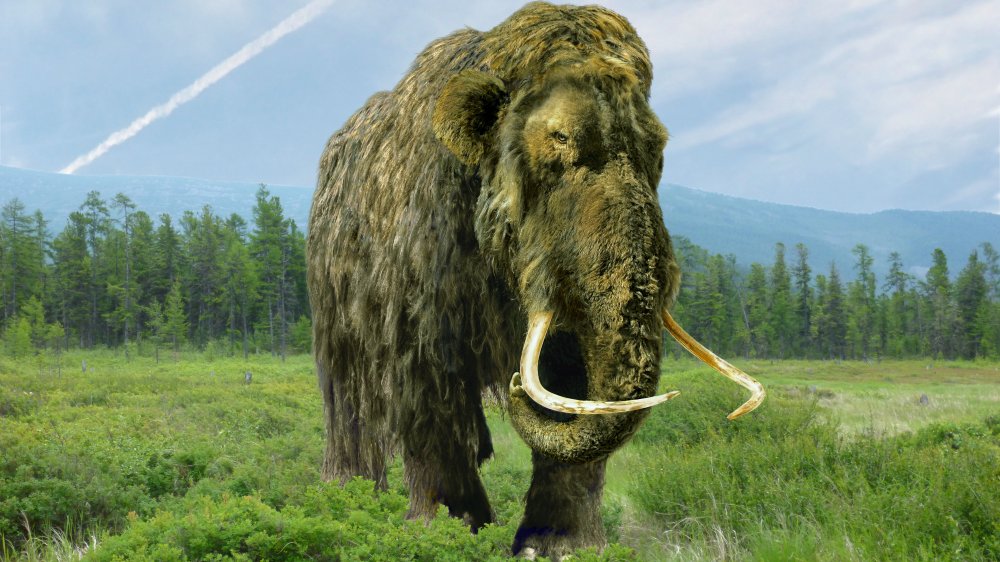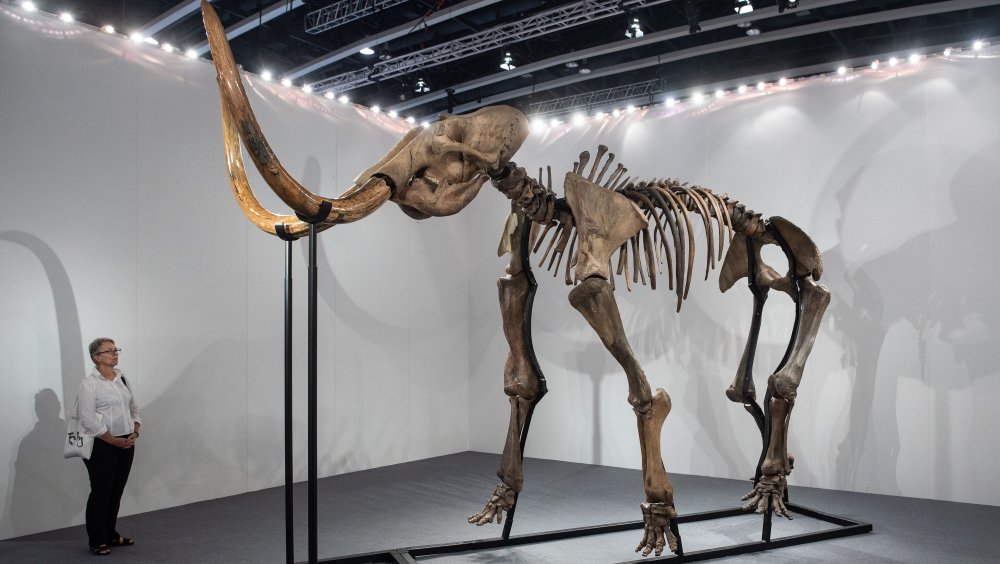The Reason Woolly Mammoths Went Extinct
If you loved Sesame Street as a child, then you should hate that woolly mammoths went extinct. After all, wasn't Snuffleupagus a tusk-less woolly mammoth? The prospect raises deeply saddening questions. For instance, was Snuffy the last of the woolly mammoths? Was his nickname "Snuffy" because the rest of his species got snuffed out? Most importantly, why did the world's Snuffleupagi have to die?
One obvious possibility is that mammoths took a wrong turn on the way to Sesame Street and ended up on Cemetery Street. But scientists have other explanations for why they went extinct. Today's article is brought to you by the letter 'C' because you're about to see how Snuffy's cookie crumbled.
Woolly mammoths were slowly starved into extinction
The first mammoths appeared six million years ago, per the World Atlas. These elephantine herbivores were roughly the size of Asian elephants weighed an estimated five tons. Mammoths roamed most of the Earth, first inhabiting Africa and then spreading to Europe, Asia, and North America. As animals migrated and fruitfully multiplied, they evolved into different variants of mammoth. But about 10,000 years ago they began to die off before completely disappearing roughly 4,000 years ago.
Mammoth numbers dwindled as global temperatures increased. The shifting climate led to a decline in the plants mammoths depended on. CBS reports that based on an analysis of 23,500 mammoth bones, researchers determined that at the end of the Ice Age, mammoths began to experience "mineral starvation." Warmer temperatures ushered in acidic conditions that eliminated nutrients mammoths needed. As a result they developed osteoporosis, arthritis, and a condition called osetomalacia which softens and bends bones. In addition to losing food, they became food as humans and other predators hunted them in their weakened state. In their desperation, woolly mammoths began drinking from mineral springs, licking rocks, and eating dirt before their species ultimately bit the dust. The salt lick areas where famished mammoths gathered would become "mammoth cemeteries."

